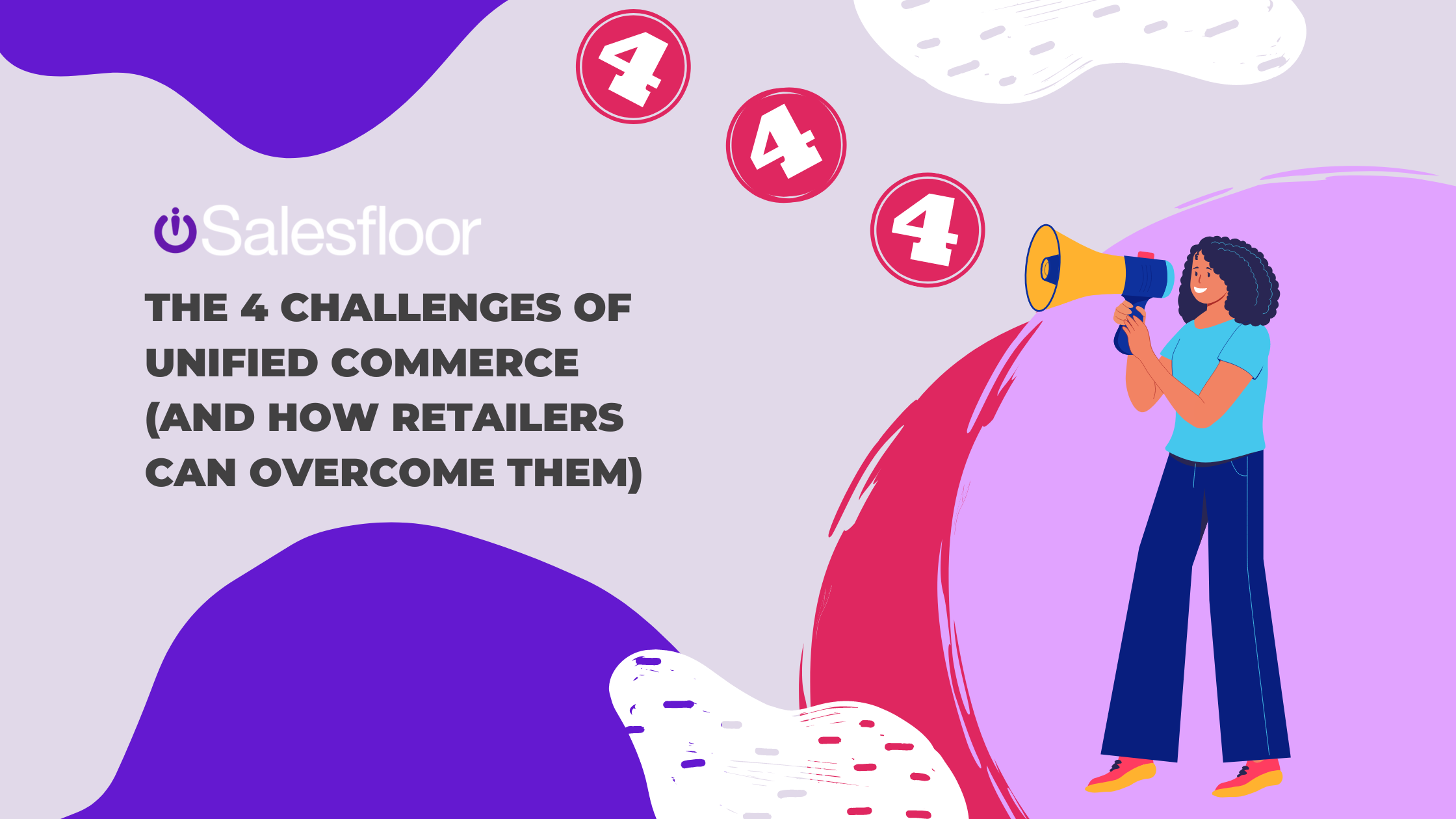3 min read
The 4 Challenges of Unified Commerce (And How Retailers Can Overcome Them)
![]() Megan Honan
:
Feb 21, 2023
Megan Honan
:
Feb 21, 2023

The pandemic forever changed how shoppers interact with brands. Today, consumers are digital-first and expect a seamless omnichannel experience.
At the same time, brick-and-mortar remains an essential channel for retailers. Eight-five percent of all retail sales still occur in a physical store.
Unified commerce views ecommerce and retail stores as one channel. With unified commerce, retailers deliver a consistent customer experience that encourages loyalty and drives revenue.
But adopting a unified commerce strategy is not easy. In this article, we’ll explore the four challenges retailers face when implementing unified commerce and how to overcome them.
Challenge #1: Ecommerce and store teams still operate in a silo
While many retailers have invested in technology to support the omnichannel shopper, their organizational structures have remained stagnant. Ecommerce and store teams operate independently—with minimal communication and collaboration.
What to do:
Instead, retailers should organize ecommerce and store departments by region. These teams will allow retailers to address the unique omnichannel needs of each market. Regional teams can also identify and address organizational gaps faster.
Challenge #2: Misaligned KPIs
Ecommerce and store teams often have separate key performance indicators (KPIs) that do not align or even create competition.
Retail stores track metrics that reflect activity within their four walls—such as in-store sales, foot traffic and sales by employee. Ecommerce teams focus on digital activity, including website traffic, cart abandonment rate and online conversion rate.
Often, these metrics focus only on the outcome (i.e., did the sale occur online or in a store?) This disconnect can create friction between the two teams and hurt the customer experience.
What to do:
Retailers should use metrics that capture the customer journey, such as:
- Customer acquisition costs that include leasing and store operations costs
- Customer lifetime value across channels
- Return rates
- Net promoter score
- Customer satisfaction score
- Customer loyalty index
- Customer effort score
- The use of buy online, pickup in-store (BOPIS), and curbside pick up.
Challenge #3: Omnichannel fulfillment increases the workload of store staff
While retailers offered BOPIS and curbside pickup before the pandemic, its adoption soared when stores shut down in 2020. In 2019, only 4% of the 500 largest retailers offered curbside pickup. Today, almost half of consumers shop with the expectation that curbside pickup is available.
But while these services are vital to a unified commerce strategy, they are also time-consuming for staff.
What to do:
Unified commerce requires retailers to view physical stores as marketing billboards, opportunities for customer engagement and mini fulfillment centers. As a result, the store should serve as a link between retail and ecommerce teams.
- Inventory management: Ecommerce and store teams should view inventory as a whole rather than by channel. An integrated POS system is essential.
- Rethink store design: Traditionally, retailers focused on packing sales floors and stockrooms with merchandise. Today, store design should mimic the omnichannel experience—with space for product exploration, customer service and online order fulfillment.
- Consider a different approach to staffing: Since convenience drives demand for BOPIS and curbside pickup, speed is essential. Retailers should establish separate roles for customer service and in-store fulfillment.
Challenge #4: Inconsistent Customer Service Across Channels
Today, shoppers expect a streamlined experience across channels. But customers sometimes receive a different level of customer service online than they do in stores.
What to do:
Retailers need a unified platform for customer engagement that encourages personalization and convenience.
Take advantage of data
A comprehensive customer database allows sales associates to access customer attributes to drive selling—including purchasing history, sizes and preferred styles. Whether a customer shops online or offline, sales associates can access the same data and provide equivalent service.
Offer appointment shopping
Appointment shopping is another option to enhance the customer experience. A recent survey found that 43% of shoppers are more likely to schedule appointments now than before the pandemic. By providing in-store or virtual appointments with local associates, retailers give customers flexibility.
Invest in staff training
Finally, retailers should provide staff with training for clienteling and product knowledge. Today, the role of a sales associate goes beyond operating the POS system and restocking the sales floor. Instead, retailers should equip store staff and online customer service representatives with tools to become product experts and brand ambassadors.
Build a Unified Commerce Strategy with Salesfloor
Unified commerce meets the demands of the omnichannel consumer. But creating a unified commerce strategy requires retailers to rethink operations and invest in digital tools.
Salesfloor is an all-in-one customer management platform. Our customer insight dashboard gives associates detailed customer information. AI-assisted recommendations ensure a personalized customer experience. And our appointment booking tools make it easy for customers to receive support virtually or in person.
Book a demo today to see how 50,000 store associates and digital sellers use Salesfloor to enhance the customer experience.


